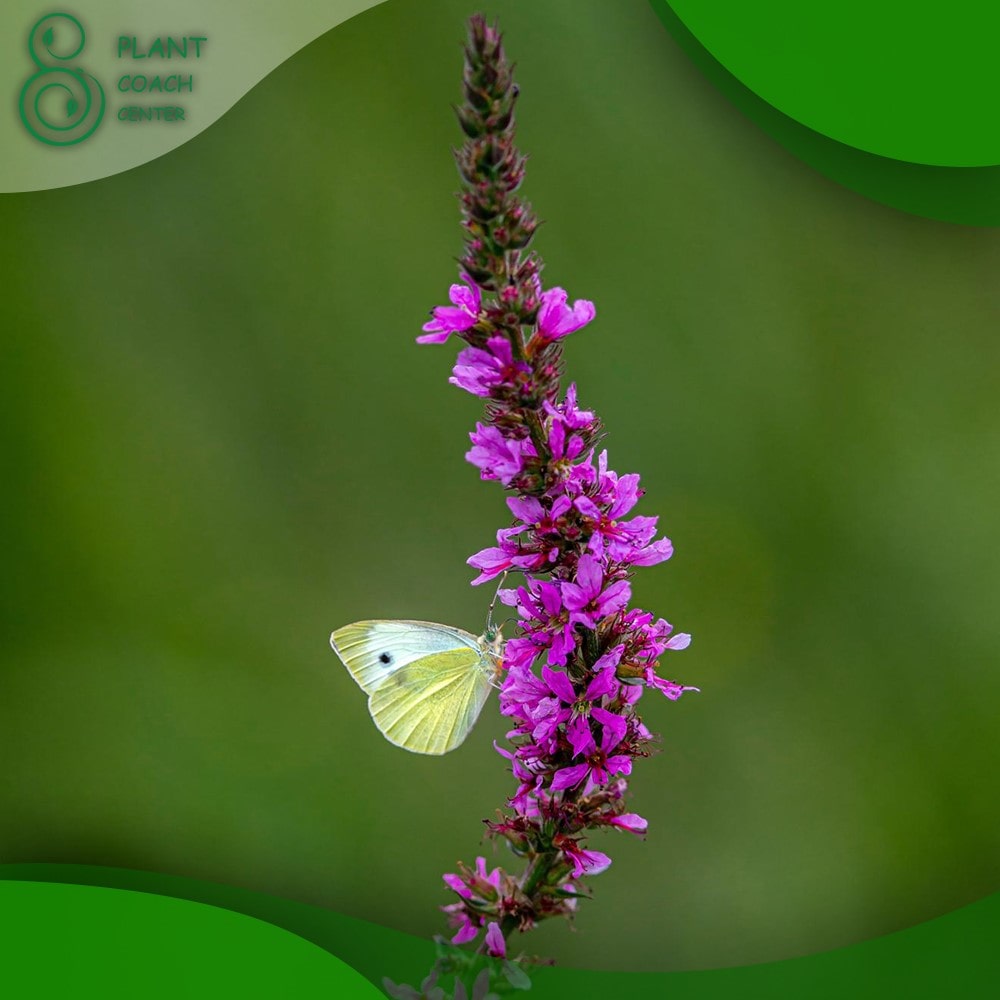Introduction to When to Prune Heather
Heather, a beloved staple in many gardens, is not just your run-of-the-mill shrub. This resilient plant, with its charming clusters of delicate, bell-shaped flowers and evergreen foliage, has earned its place in the hearts of garden enthusiasts for good reason. However, to unlock its true potential and keep it flourishing, one crucial aspect demands your attention: timing. Pruning heather might sound straightforward, but it’s an art that hinges on precisely when you decide to wield those shears.
In the following sections of plantcoachcenter.com , we’ll delve into the ins and outs of heather pruning, shedding light on the precise moments when your intervention can make all the difference. Whether you’re an experienced gardener or a novice green thumb, understanding the when behind heather pruning will empower you to nurture a garden that bursts with vibrant colors and thriving foliage. So, let’s embark on this journey to discover the secrets of when to prune heather and transform your garden into a haven of natural beauty.
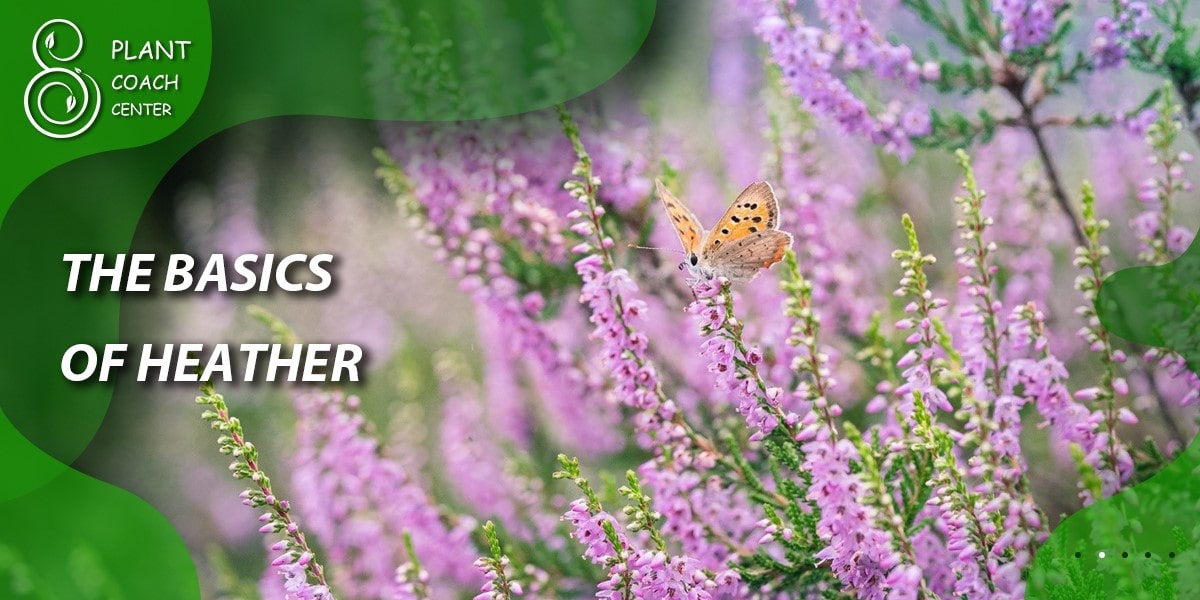
The Basics of Heather
Heather, also known as Calluna vulgaris, is a remarkably versatile and visually striking plant that graces gardens and landscapes with its unique charm. This evergreen perennial, native to Europe and parts of Asia, belongs to the Ericaceae family. Its name is derived from the Greek word “kallune,” meaning “to sweep,” a nod to its historical use as broom material. Heather has gained widespread popularity in gardens for its resilience and adaptability, thriving in a range of climates and soil conditions.
Varieties and Characteristics
Heather presents an array of varieties, each with its distinct characteristics and colors. Common varieties include Calluna vulgaris ‘Dark Beauty’ with deep purple foliage, ‘Firefly’ boasting fiery red blooms, and ‘Velvet Fascination’ known for its soft, silver-gray foliage. These varieties offer a diverse palette to elevate your garden’s visual appeal.
Landscaping Value
Beyond its aesthetic charm, heather serves as an invaluable asset in landscaping. Its vibrant, bell-shaped flowers create picturesque vistas, and when planted in masses, they form enchanting carpets of color. The evergreen foliage ensures your garden remains vibrant even in the harshest of winters, making heather an exceptional choice for year-round visual interest.
Why Timing Matters
Understanding the critical role of timing in heather pruning is fundamental to maintaining its vitality and allure.
Significance of Timing
Pruning heather at the right moment is akin to conducting a symphony; it orchestrates the plant’s growth and flowering patterns. The timing, specifically, revolves around the natural lifecycle of heather, which blooms in late summer and early autumn. Pruning out of sync with this cycle can disrupt its harmonious rhythm and compromise the plant’s overall health.
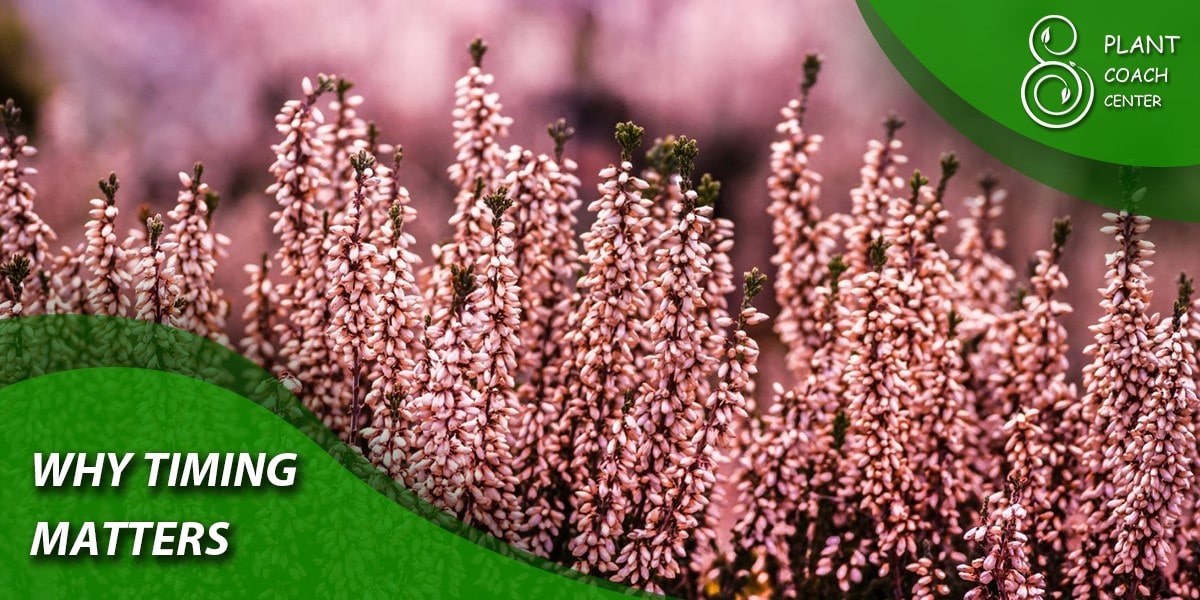
Impact of Improper Timing
When heather is pruned at the wrong time, its repercussions are far from subtle. Reduced flowering is one of the immediate consequences, depriving your garden of the colorful spectacle it promises. Beyond aesthetics, untimely pruning can weaken the plant, making it vulnerable to pests and diseases. Heather’s resilience hinges on maintaining its vigor, and mistimed pruning can throw this equilibrium off balance.
In the next sections, we will delve deeper into the nuances of timing, exploring precisely when to prune heather to ensure optimal growth and health. By understanding the plant’s natural cycles and needs, you’ll be better equipped to harness its full potential in your garden.
The Best Time to Prune Heather
Pruning heather is akin to striking a chord at the perfect moment in a melody. To get it right, timing is everything, and the sweet spot for heather pruning is late spring to early summer. This carefully chosen window aligns harmoniously with the completion of its flowering phase, ensuring that you neither disrupt the spectacle of blossoms nor hinder the plant’s future growth.
Why Late Spring to Early Summer?
As late spring rolls into early summer, heather undergoes a natural transition from the flowering phase to a period of rest and rejuvenation. During this time, the vibrant blooms have gracefully adorned the plant, and its energy now shifts towards preparing for the upcoming seasons. Pruning during this window respects the plant’s rhythm, allowing it to recover and store energy for the following year’s bloom.
Pruning After Flowering
When the heather’s blossoms have gracefully faded, it’s time to embark on the post-flowering pruning journey. This is a crucial step to ensure the plant’s continued health and vibrant appearance.
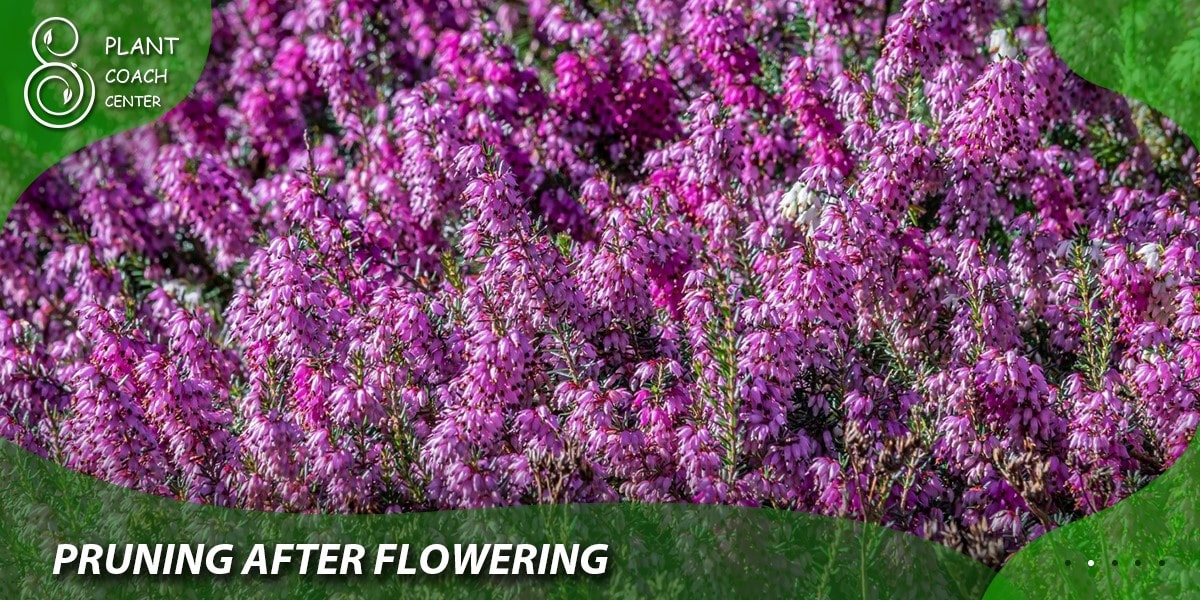
Promptness is Key
The first rule of post-flowering pruning for heather is promptness. Do not let the spent blooms linger for too long, as this can divert the plant’s energy towards seed production instead of growth. Within a few weeks after flowering, grab your pruning shears and get to work.
Identifying Spent Blooms
Before you begin snipping away, take a close look at your heather. Identifying spent blooms is a crucial skill. These faded flowers can be easily recognized by their withered appearance and lack of color. They contrast starkly with the vibrant, healthy blooms. Your aim is to trim away only what has served its purpose, leaving the rest intact.
The Right Technique
Now that you’ve spotted the spent blooms, it’s time to execute the right pruning technique. Approach the plant with sharp pruning shears, and for each spent bloom, trace the stem down to a pair of healthy leaves or buds. Make your cut just above this point, ensuring a clean, precise snip. This technique not only removes the faded blossoms but also encourages the growth of new shoots and buds.
In the next sections, we will explore additional aspects of heather pruning, including shaping and size control, as well as crucial tips for avoiding winter pruning pitfalls. By mastering these techniques, you’ll be well on your way to nurturing heather that thrives and dazzles year after year.
When to Prune for Shape and Size Control
Ensuring that your heather remains a visual delight throughout the year goes beyond just timing your pruning sessions. It involves understanding the importance of regular maintenance pruning and how it contributes to shaping and controlling the size of this versatile plant.
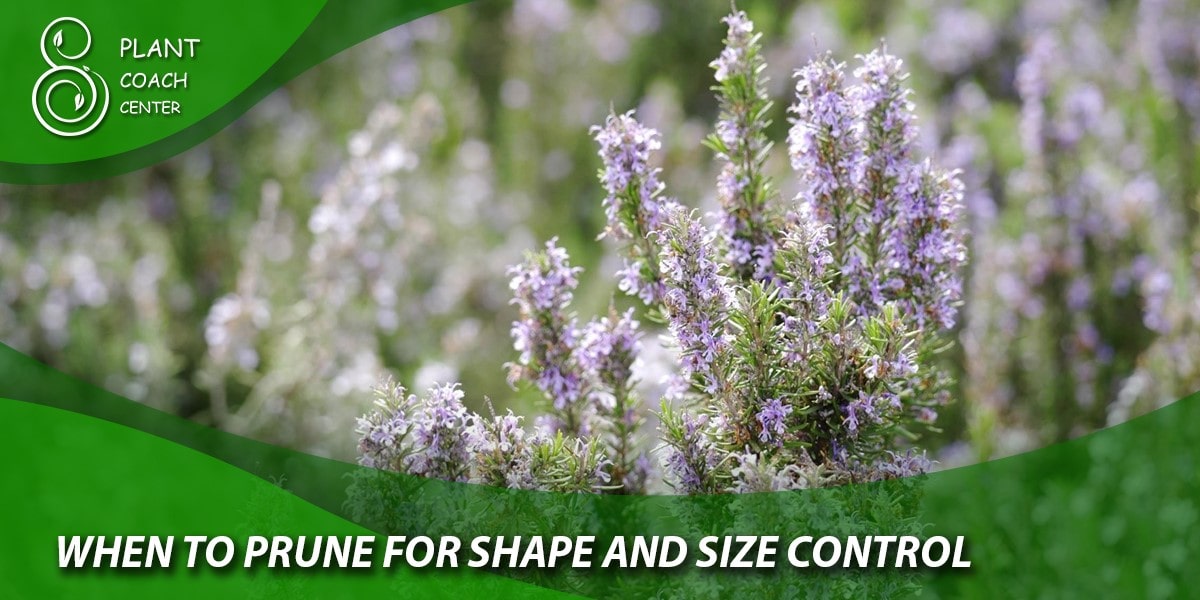
The Significance of Regular Pruning
Picture your heather as a work of art in progress. Just as a sculptor refines their masterpiece with each stroke of the chisel, you can shape your heather to perfection with well-timed pruning. Regular pruning not only enhances the plant’s aesthetic appeal but also promotes its overall health and longevity.
Light Trimming Throughout the Year
Maintaining heather’s shape and size is an ongoing endeavor. To prevent overgrowth and encourage a compact, tidy appearance, consider light trimming throughout the year. This isn’t the heavy-handed approach you’d take during the post-flowering phase but rather a series of subtle touch-ups. Snip away any wayward branches or leggy growth to maintain the desired form.
Avoiding Winter Pruning
While pruning is essential, it comes with its own set of “when not to” rules, and one of the cardinal sins in heather care is pruning during late fall and winter.
Frost and Winter Hardiness
As the temperature drops and winter blankets the landscape, your heather enters a phase of dormancy. During this period, the plant conserves energy to withstand the cold and frost. Pruning at this time disrupts this vital process. Freshly cut stems are vulnerable to frost damage, and the plant’s reduced winter hardiness leaves it susceptible to cold-induced stress.
In the depths of winter, heather should be left to rest, undisturbed by shears or pruners. Your focus should shift towards protecting it from the harsh elements rather than wielding your tools.
By embracing regular maintenance pruning and steering clear of winter intervention, you can sculpt your heather into a masterpiece that graces your garden year-round while safeguarding it from potential harm. In the following sections, we’ll dive into the nitty-gritty of tools and techniques, equipping you with the knowledge to execute your pruning endeavors with finesse.
Common Mistakes to Avoid Regarding When to Prune Heather
Understanding when not to prune heather is just as crucial as knowing the optimal timing. Here are common mistakes to avoid:
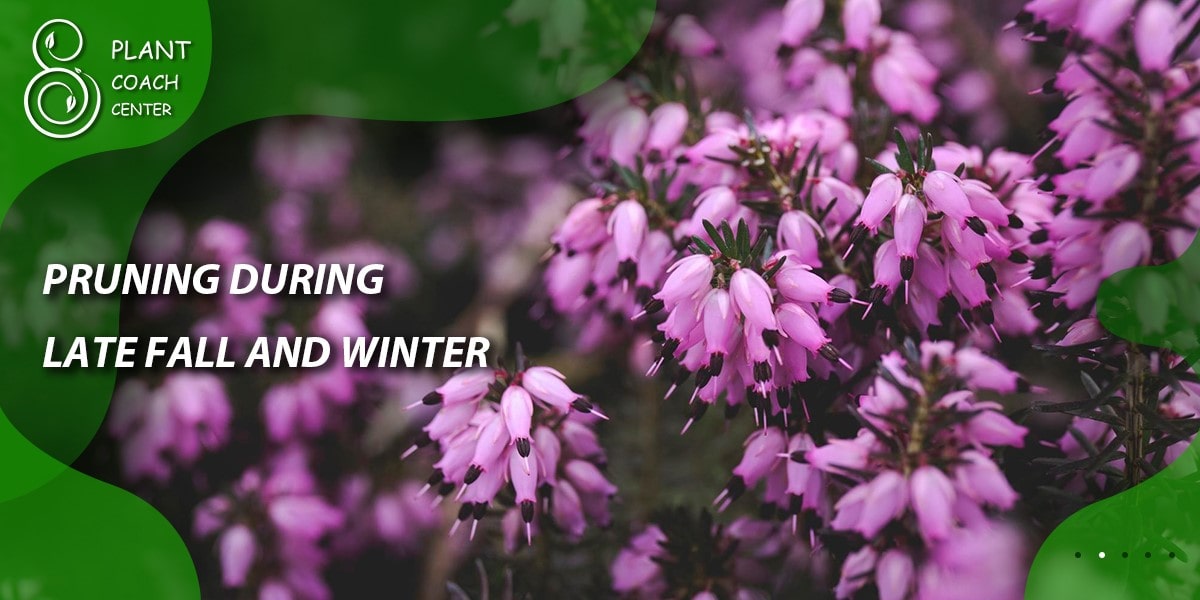
Pruning During Flowering Season:
Pruning heather while it’s in full bloom is a common error. Heather’s vibrant blossoms are a sight to behold, and cutting them during this time not only robs your garden of their beauty but also disrupts the plant’s natural cycle, potentially reducing next year’s blooms.
Pruning During Late Fall and Winter:
Pruning heather in late fall or winter is a critical mistake. During these colder months, heather enters a period of dormancy, and any pruning can leave it vulnerable to frost damage. It’s best to let it rest during this time.
Neglecting Post-Flowering Pruning:
Failing to prune heather after it has finished flowering is another common blunder. This post-flowering pruning is essential to remove spent blooms and encourage new growth. Delaying this task can hinder the plant’s vigor.
Inconsistent Maintenance Pruning:
Neglecting to perform light, routine maintenance pruning throughout the year is an often-overlooked mistake. Without these occasional touch-ups, heather can become overgrown and lose its desired shape.
Heavy-Handed Trimming:
Being overly aggressive with your pruning shears is a mistake to avoid. Heather responds best to gentle and precise pruning. Excessive cutting can damage the plant and lead to unsightly gaps.
Pruning During Extreme Weather:
Avoid pruning heather during extreme weather conditions, such as scorching heat or freezing cold. Pruning during these times can stress the plant, making it less resilient to harsh weather.
Ignoring Plant Health Signals:
Heather can signal its need for pruning through signs like excessive leggy growth or a decline in flowering. Ignoring these signals can lead to missed opportunities for corrective pruning.
By sidestepping these common pruning pitfalls related to timing, you can ensure that your heather remains healthy, visually appealing, and resilient throughout the year.

Conclusion
In conclusion, mastering the art of when to prune heather is essential for cultivating a thriving and visually stunning garden. Timing, as we’ve emphasized throughout this guide, is paramount. Pruning during late spring to early summer, after the flowering phase, aligns with the plant’s natural growth cycle and ensures optimal results.
However, it’s not just about when but also how you prune – gentle, precise cuts and prompt post-flowering pruning are key. By avoiding common pitfalls, such as pruning during winter or overzealous trimming, you can maintain the health and vitality of your heather. Incorporating regular maintenance pruning into your gardening routine will help keep your heather’s shape and size in check, preventing overgrowth and promoting its aesthetic appeal.
Ultimately, the rewards of adhering to the recommended pruning schedule are plentiful: a garden adorned with vibrant heather year after year, a testament to your gardening prowess and a source of natural beauty for all to enjoy. So, seize the shears, follow the timing guidelines, and watch your heather flourish, adding a touch of elegance to your outdoor space.
FAQs
When is the best time to prune heather?
Late spring to early summer, after flowering.
Can I prune heather during late fall or winter?
No, it's best to avoid pruning during these seasons.
How often should I perform maintenance pruning?
Light trimming throughout the year is recommended.
Why is prompt post-flowering pruning important?
It prevents energy diversion and promotes new growth.
Is heavy-handed pruning suitable for heather?
No, heather responds better to gentle, precise pruning.
What happens if I prune heather during extreme weather?
It can stress the plant, so avoid it during harsh conditions.


